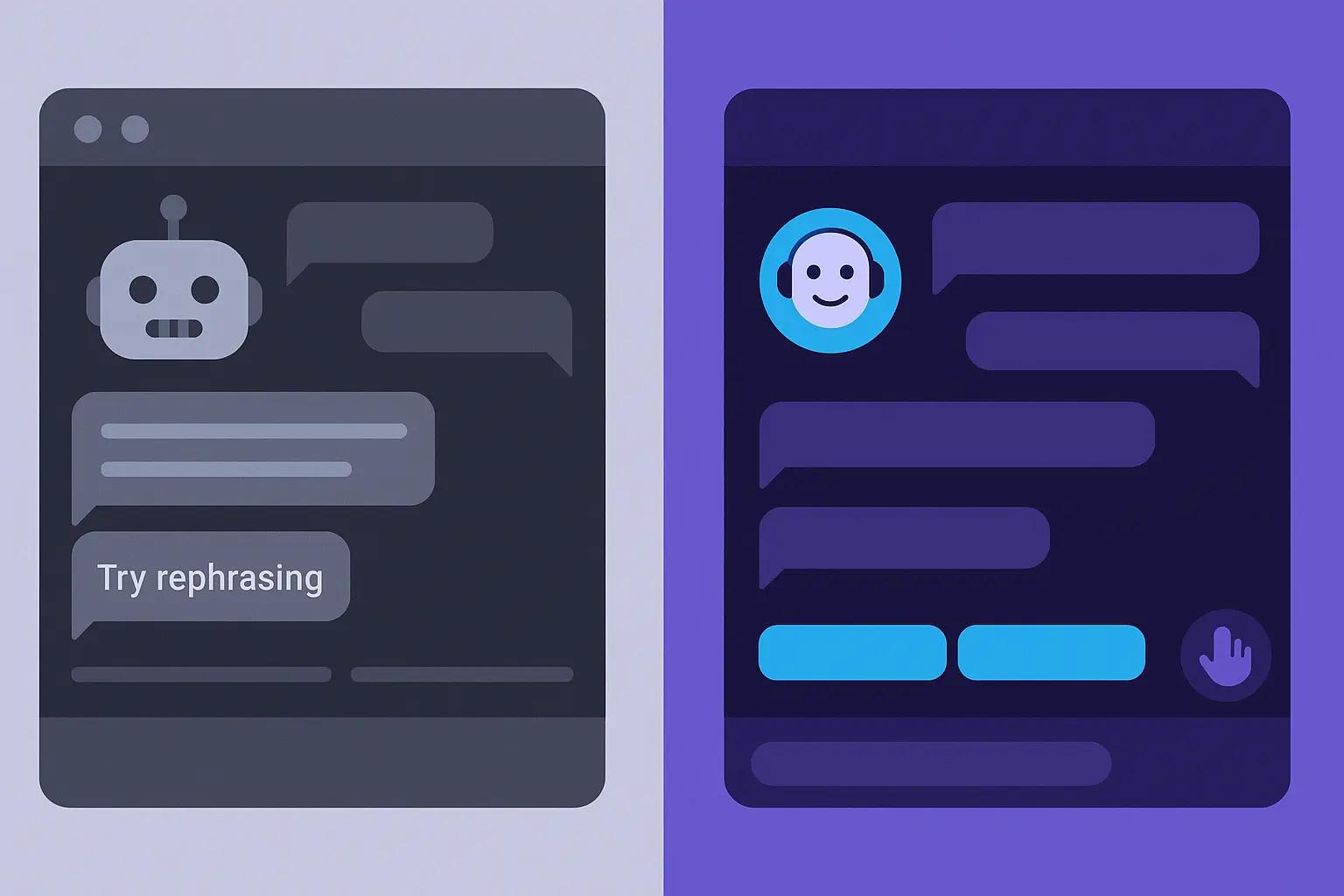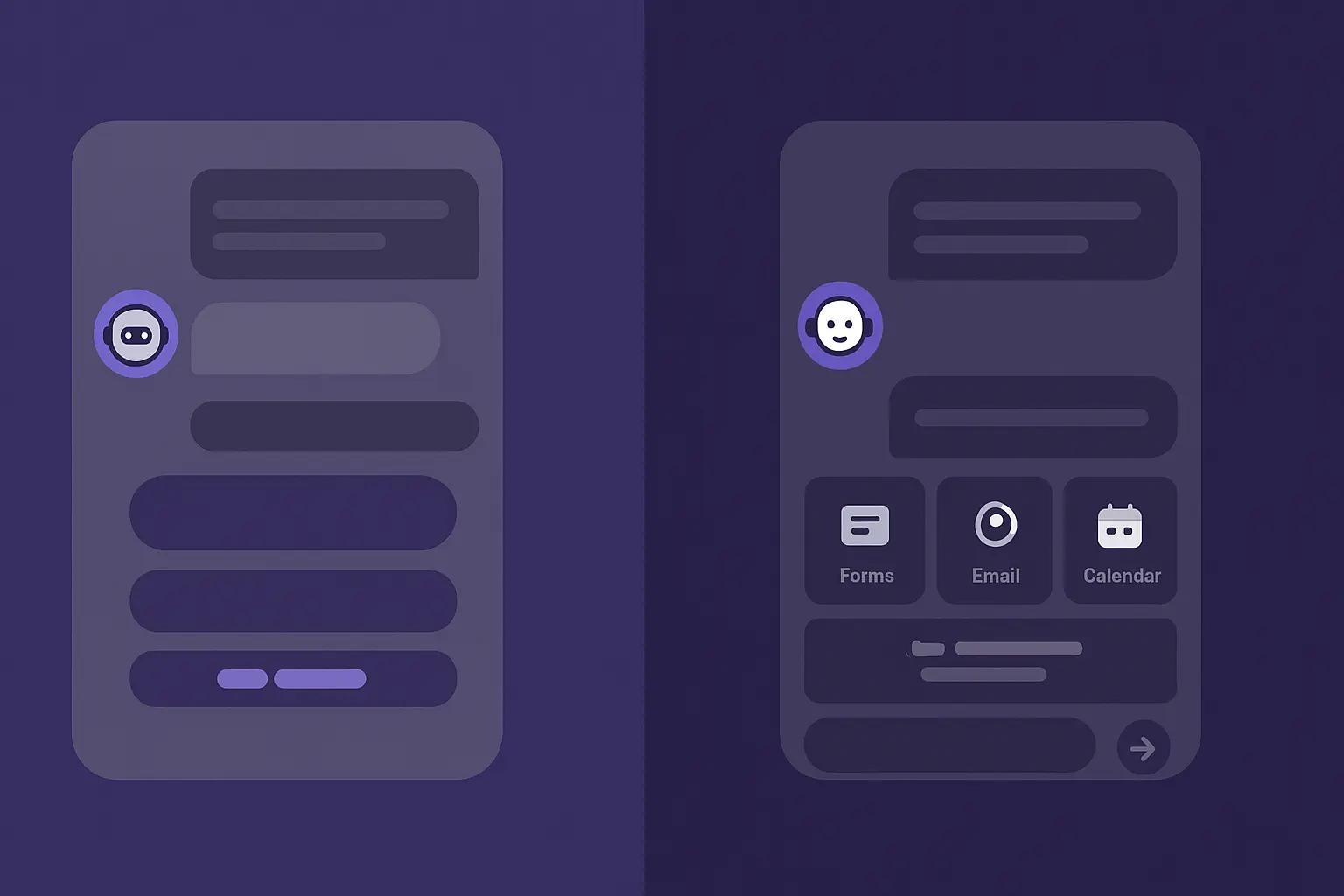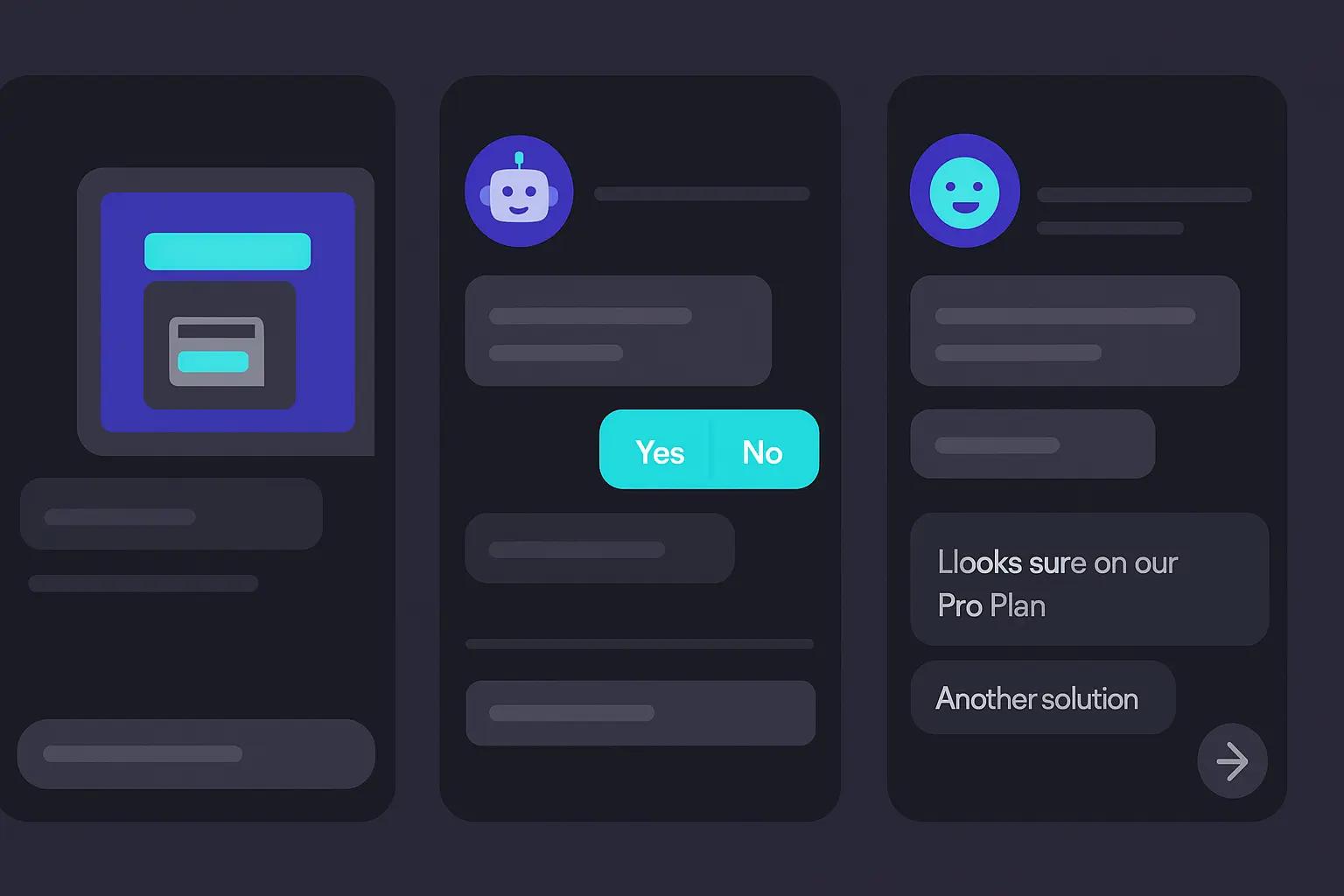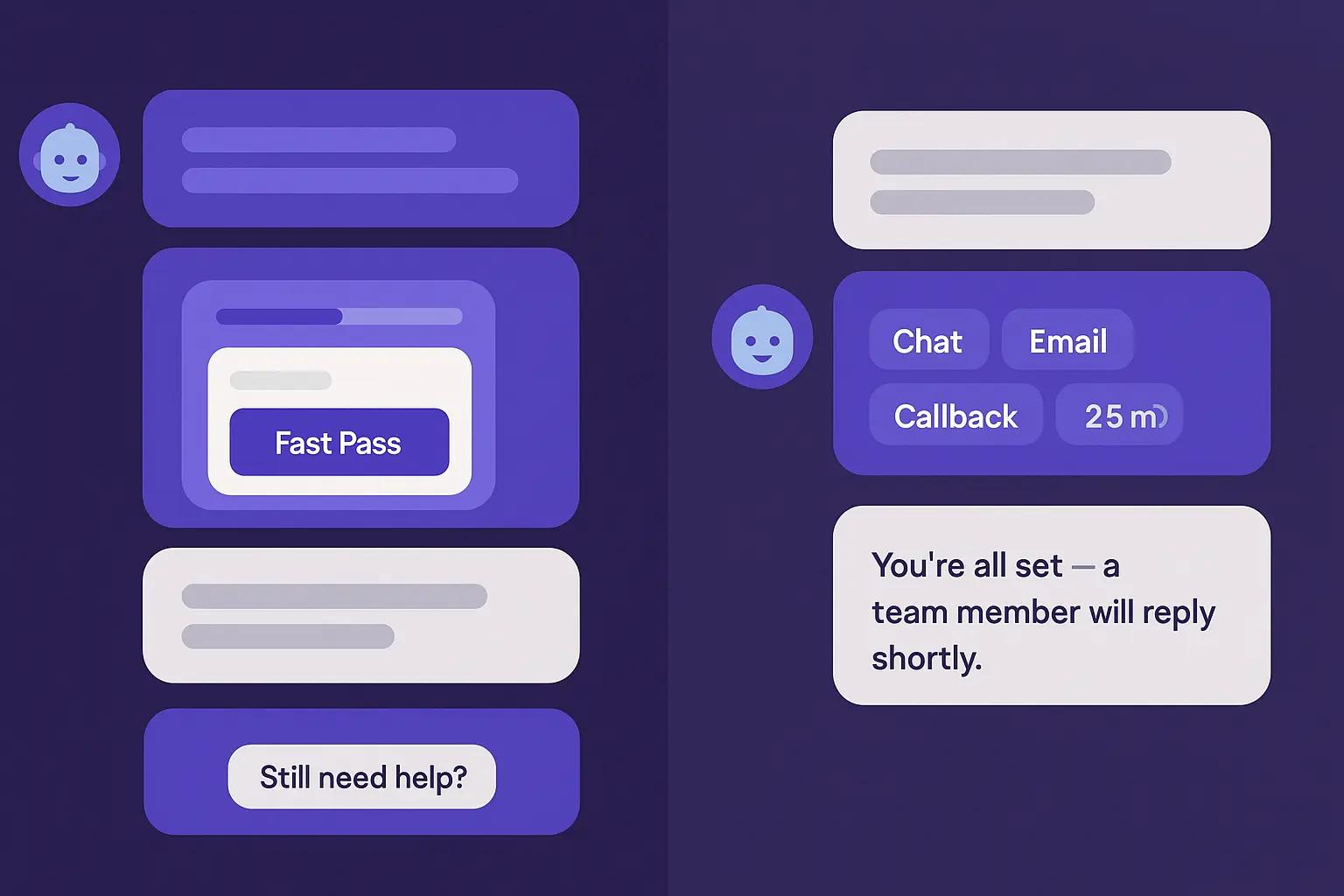
A Chatbot Isn’t Helping If It Feels Like Talking to a FAQ Sheet.
Most chatbots either:
- Ask irrelevant questions
- Give canned answers that sound scripted
- Confuse users with logic loops
- Or vanish as soon as a human is needed
And that’s a problem because in SaaS and service businesses, your chatbot isn’t just support. It’s your first impression.
This post shows you how to build chatbots that feel human (without pretending to be a human), help faster, and actually increase conversions.
What Makes a Chatbot “Robotic”?
It’s not the voice. It’s the lack of context, tone, or empathy.
Red flags:
- “I'm just a bot, but here’s a link.”
- “I didn’t understand that. Try rephrasing.”
- Endless “Did that solve your issue?” loops
Asking for name + email before giving any help
First Rule: Don’t Fake It Own the Bot Voice
Pretending to be a real human backfires fast.
Instead:
- Use a bot persona (“Hi, I’m FlowBot, here to help”)
- Set expectations (“Instant answers now, human help in <2h”)
- Let users opt out (“Type ‘human’ any time”)
The goal isn’t to trick people it’s to build trust through clarity.
Use Case1: Lead Qualification (Without the Interrogation)
Bad flow:
- “What’s your email?”
- “What’s your budget?”
- “What company are you with?”
Better flow:
“Hey there 👋 What brings you here today?”
Options: “Looking for a demo” / “Need support” / “Just browsing”
Custom reply trees based on user path
THEN ask for email if needed
Tools that do this well:
- Tidio
- Intercom (Fin workflows)
- Customerly
- Landbot (if you want visual flows)
Use Case2: Product or

Let users skip the nav bar entirely.
Examples:
- “Need help finding a feature?”
- “Not sure which plan is right for you?”
- “Looking for use-case guides?”
Structure responses like:
- Direct links to relevant pages
- One-line product summaries
Optional “talk to support” escape route
Use Case3: Support That Doesn’t Feel Like a Loop
If your support bot only links to help docs, users get frustrated.
Instead:
- Show answers inline
- Include screenshots or GIFs
- Ask “Did this fix it?” before showing another article
- If no: “Would you like to escalate this to a person?”
Add light memory:
- “Last time you asked about billing still need help?”
- “Looks like you’re on our Pro plan. Here’s how to access this feature…”
Make the Bot Feel Smart Without Acting Too Smart

This isn’t about full AI. It’s about handling the top 20% of use cases with clarity.
Do:
- Set up clear paths for common actions
- Use buttons over open text (faster + easier)
- Show progress (“Step 1 of 3: Pick your category”)
- Let users skip or restart the flow
Don’t:
- Rely on keyword detection only
- Guess what people want if they didn’t ask
- Add fake typing delays
Copy Tips: Make Your Bot Sound Like Your Brand
Avoid:
- “Greetings, valued visitor.”
- “Thank you for your inquiry. I will now attempt to assist.”
- “I’m sorry, I don’t understand your request.”
Instead:
- Use contractions (“you’re” instead of “you are”)
- Add tone cues (“Got it here’s what I found.”)
- Use branded phrases (“We call this our Fast Pass”)
Make sure your bot:
- Speaks like your emails
- Mirrors your product tone
- Ends with a clear CTA (“Still need help?” “Here’s what to do next.”)
When to Escalate (and How to Make That Seamless)
Always give users an out.
Best practice:
- Show estimated wait time
- Keep their message + context for the human
- Let them choose channel: chat, email, or callback
- Confirm that their request was passed along
Worst experience: “Please re-explain this to the next person.”

That Make This Easy (No Dev Required)
| Need | Tools to Use |
|---|---|
| Basic chat with logic | Tidio, Intercom, Crisp, Freshchat |
| Visual flow builder | Landbot, Botpress |
| CRM + chatbot combo | HubSpot Chat, Zoho SalesIQ |
| AI add-ons | ChatGPT Assistants, OpenAI API |
Most of these integrate natively with:
- Calendly
- Help docs
- Google Sheets
- Slack
- CRMs like HubSpot or Pipedrive
Conclusion: Your Chatbot Is Your First Sales Rep Don’t Let It Blow the Intro
Your chatbot shouldn’t feel like a gatekeeper. It should feel like a helpful, fast-moving concierge.
The ones that convert:
- Don’t pretend to be human
- Know when to help vs. hand off
- Use brand tone without sounding fake
- Deliver value before asking for data
Clarity. Tone. Direction. That’s what makes chatbots work.

Custom video production at scale
Aneeverse covers all video needs whether you're telling your brand story, launching a product or running ads. Discover how we can help you scale.
